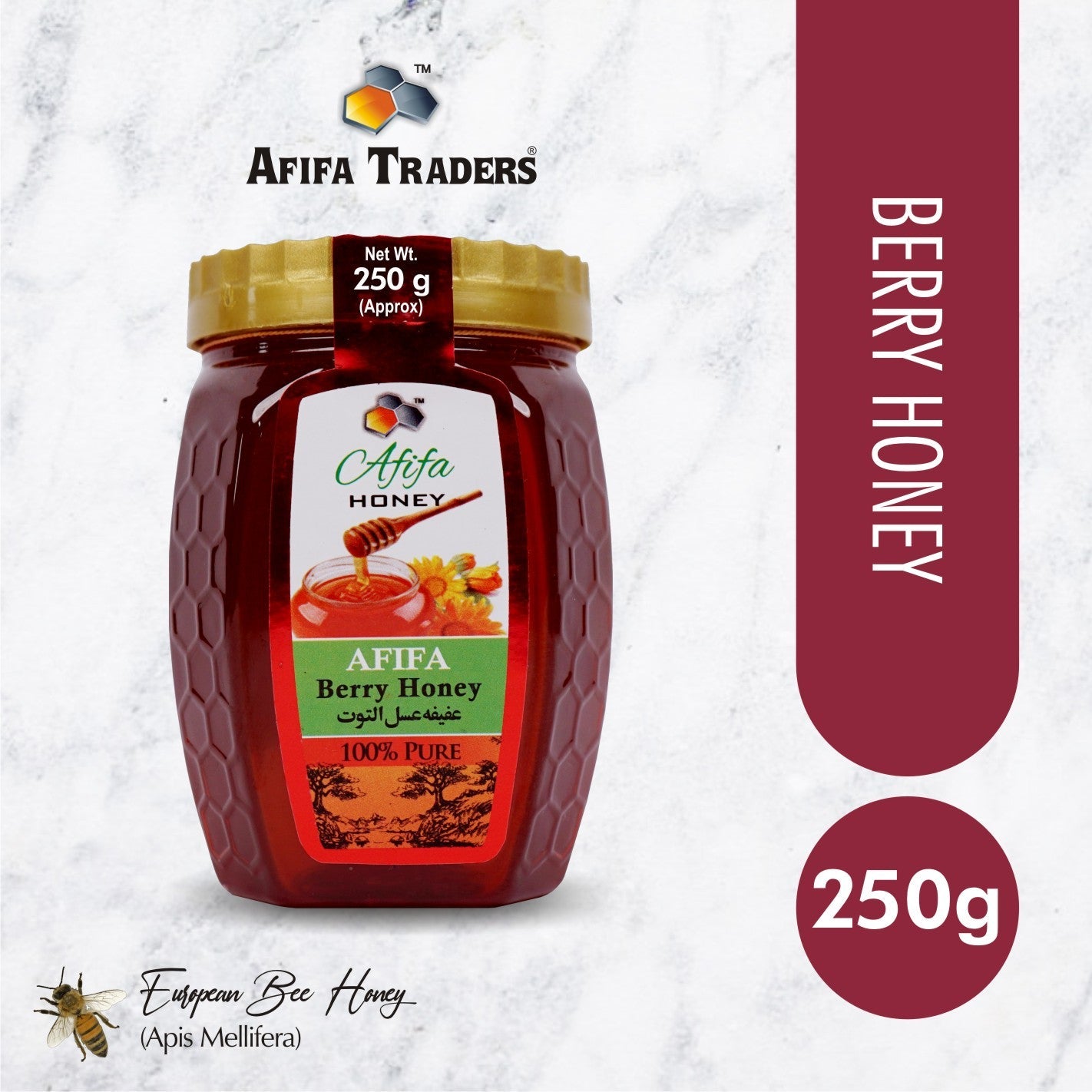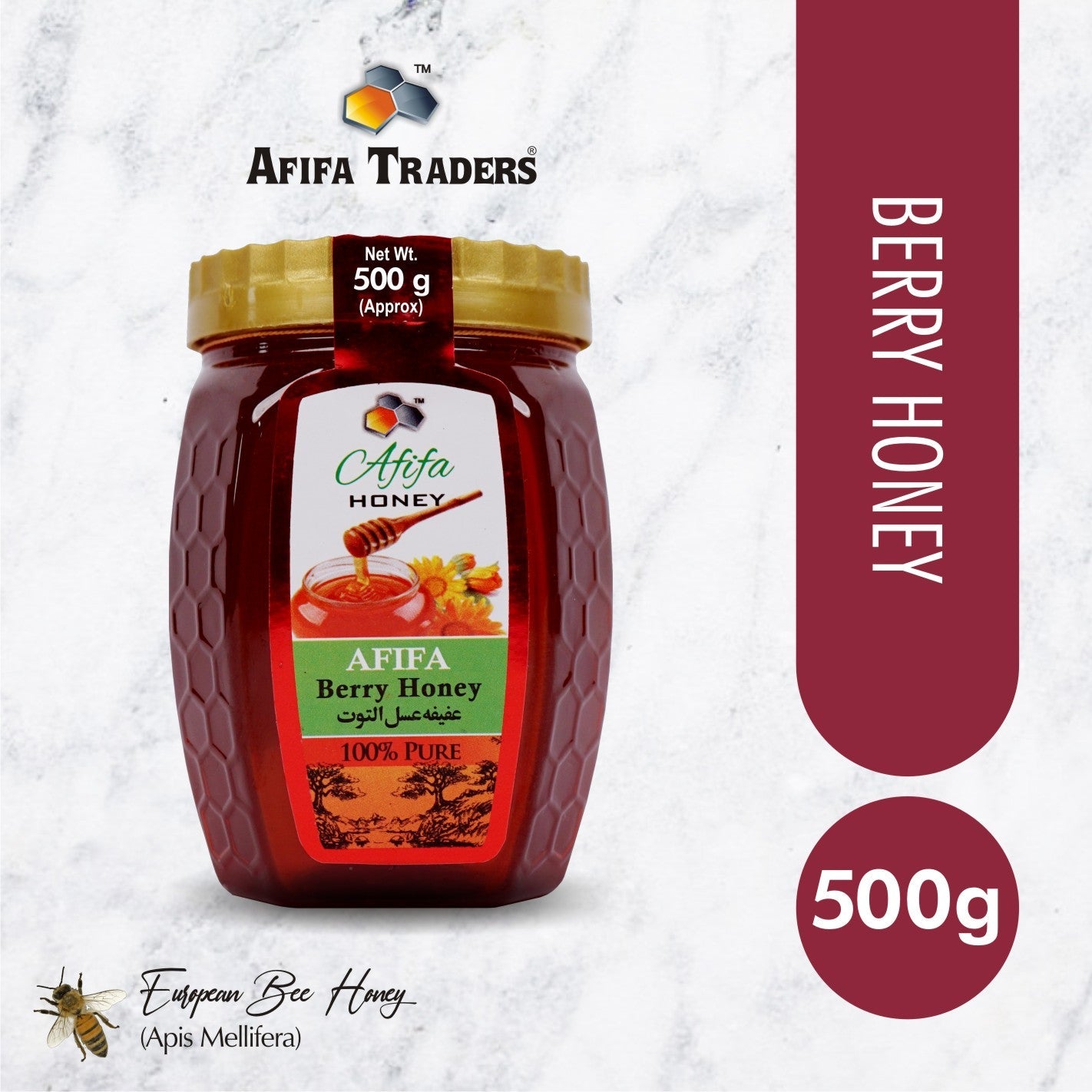Afifa Honey
Berry Honey
Berry Honey
Couldn't load pickup availability
HONEY SOURCE: Berry honey is monofloral honey which means the bees collect the nectar of the Berry flower.
Also known as Lote tree, Christ’s Thorn, Jujube, Nabkh, Elb, Ber, Bairi tree. Quite a lot of names!
Sidr is the formal Arabic name and comes from the name of the Sidr tree that is mentioned in the Holy Quran.
BOTANICAL NAME: Ziziphus Spina-Christi
Sidr belongs to the “Ziziphus” family of plants. The average tree size normally between 7-8 meters high.
The branches are soft with gray-yellow color and the flowers are yellow.
ORIGIN: Karak Valley, KP and Pak-Afghan Tribal Belt.
VISCOSITY: It’s thick honey with a rich, lavish and buttery sweet taste.
COLOR: It has a golden light color, which darkens and tends to redness over time. While fresh and newly produced, it reminds you of the same aromatic smell of berry tree in the month of October, the season when berry tree is flowering.
There are different types of berry honey, differing from one region to another, with differences in taste, color, aroma, and density. But all of them share the exquisite taste and splendid aroma.
PROPERTIES: Berry honey, the mono-floral honey which comes from the bees that feed exclusively on the nectar of the wild berry tree.
Despite tradition and recent scientific research on honey benefits for health, berry honey is still surrounded with a lot of doubt, even in the Arab world. It said that berry honey was used in magic and sorcery along with others treatment uses. Yet, their culture says that hundreds of years ago, berry honey was given as a gift to kings and princes, to express appreciation and loyalty.
The research proved that berry honey is possessing a superior wound healing activity compared to that of thyme honey and spring honey.
Considering its powerful composition, berry honey has been reported to be good for
- Diabetic patients
- Liver problems,
- Stomach ulcers,
- Respiratory infections,
- Diseases resulting from malnutrition,
- Digestive problems, constipation,
- Eye diseases,
- Infected wounds and burns, surgical wounds (incl. C-section),
- Promote speedy recovery after childbirth,
- Facilitates menstruation,
- In combination with various herbs that can be used against epilepsy,
- Strengthened the immune systems,
- Promotes general health and vitality
WHY IS THAT EXPENSIVE?
Firstly, because it’s a monofloral honey, and this means the bees can collect the nectar only for one month, in October, the flowering time. The production season continues only for 40 to 60 days a year, and that is a very short period. The efforts to prepare the apiaries take very high costs.
It is mentioned in the Qur’an, and the prophet recommends it for any kind of illness of the body.
“Honey is a remedy for every illness and the Qur’an is a remedy for all illness of the mind, therefore I recommend to you both remedies, the Qur’an and honey.”
It is an ancient tree, mentioned four times in the Qur’an. In Sura Saba, it is mentioned as an earth tree while in other Suras, it is mentioned as a paradise tree (Sidrat al-Muntaha). Allah has mentioned this tree to emphasize its beauty, strength, and grandeur (Saba 15,16; Waqia 27-33; Najm 7-18)
Share




